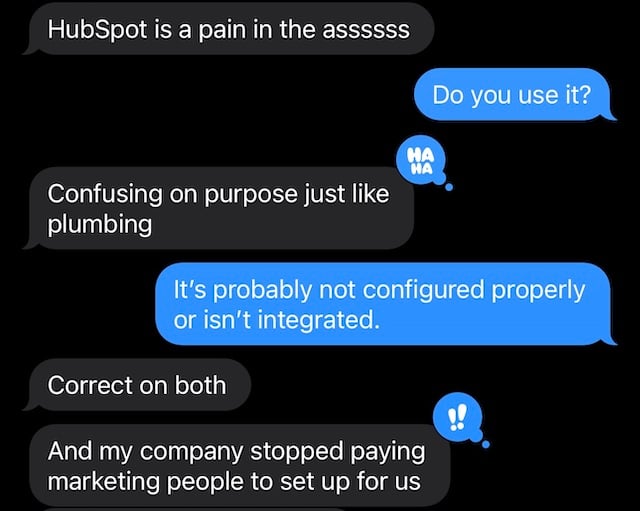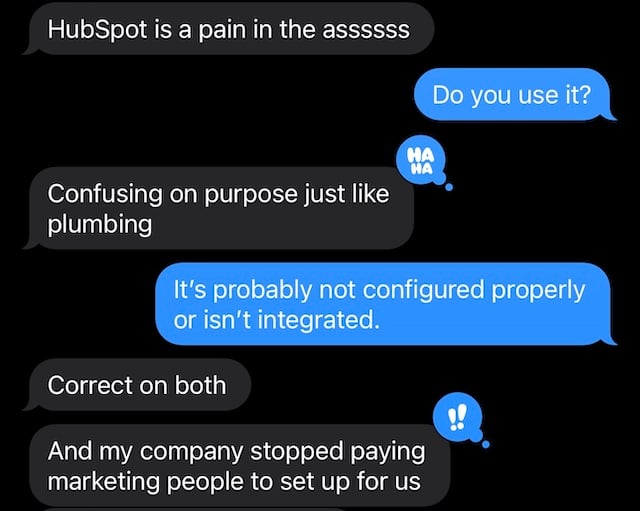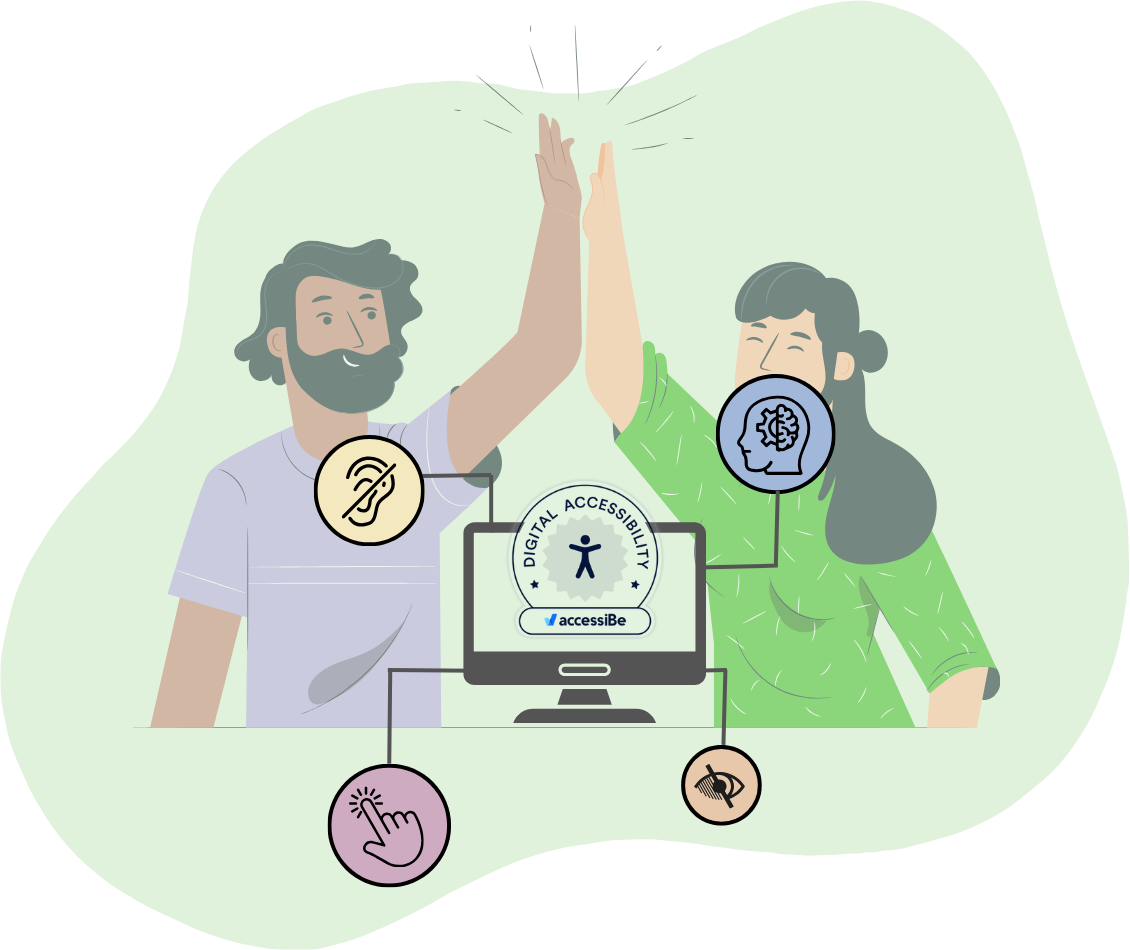We’re not much for talking around the point, so we’re just going to get straight into it: you pay a lot for HubSpot. And while that might sound like a no shit statement, clearly we need to iterate the INVESTMENT side of this platform. Last night, I was having a discussion with a friend about some certifications I was taking inside HubSpot Academy to maintain our accreditation and we had the following exchange:

Our resident HubSpot Architect laments often about his belief that only Technical Partners should complete onboarding implementations, but until there are more of us, that may not be a reality that can manifest itself anytime soon. While I won’t share the majority of our conversation, I’ll tell you that this friend is considering leaving this company because they have put implementation on the shoulders of their salespeople. Trying to bring onboarding for one of the most complex automation platforms around is not only the worst case scenario for getting the best ROI from HubSpot, but it’s a guaranteed way to boost your employee turnover and tank employee satisfaction, productivity and efficiency.
When we talk about the cost of mishandled HubSpot implementation - employee satisfaction and increased turnover are near the top of the list as symptoms. Here are a few reasons (with data to back it up) that employees may be frustrated with your mishandled HubSpot implementation and what you can do about it.
Workplace technology needs to work. (duh)
Every single thing we do on a day to day basis is app based and related to fast-moving technology. Users don’t even want to stay longer than 3 seconds for a website to load, yet you’re trying to make your employees take 5 different actions and login to separate software just to do their job properly? Technology that isn’t integrated takes time away from more important tasks and annihilates employee productivity.
According to Freshworks, 91% of employees say they are frustrated with workplace technology. From too many applications to disintegrated applications to impacted productivity, this is a massive issue that businesses can no longer afford to ignore.
And yet, here’s another interesting stat from the same study: 71% of leaders acknowledge that employees will consider looking for a new job if their current employer does not provide access to the tools, technology or information they need to do their jobs well.
We know that our technology is causing frustration and leaders are acknowledging that, yet we continue to not budget to integrate it, cheap out on implementation and lose employees to the productivity gaps we’re creating for them. AND MOST OF LEADERSHIP KNOWS ABOUT IT, YET CHOOSES TO DO NOTHING? Oof. Complacency never wins.
Bogged down employees don’t stick around.
Increasingly, employees are leaving the workforce to start their own thing. 46% of Millennials and 43% of Gen Z are now freelancers as of 2022, according to Statista.
Why are they leaving?
One of the top 10 reasons that employees leave jobs, according to 15Five.com, is due to too much workload — 40% of employees have left their jobs due to burnout.
Society for Human Resource Management states that the average cost to hire an employee is $4,129. And when you lose them? The average cost of replacement can be 50-60% of that lost employees salary and overall cost to the company can be as much as 200% of that salary.
When I heard from a friend that he was leaving his job because they were making them implement HubSpot themselves, my thoughts immediately went to the costs associated with the loss of his position (1 of only 3 customer acquisition roles in the entire organization) and the fallout of additional work that his coworkers would have to take on and additional expenses incurred by the company in the rehire and new employees acquisition process.
Does this organization realize that they’ll pay much more to replace their frustrated employees than they will to actually implement their HubSpot software?
Happier employees are more productive.
According to a study from The University of Oxford, happy employees are 13% more productive. And in the realm of sales? Happy salespeople can increase sales by 37%. And we haven’t even dug into the boosted efficiency we usually see with HubSpot Sales Reports.
When you invest in a comprehensive HubSpot implementation, rather than a basic HubSpot onboarding or relying on your salespeople or employees to configure everything for you, you can really benefit from customized reporting, really comprehensive data analytics and insights that can help optimize your efficiency and tell your employee what is working.
A more comprehensive implementation leads to higher adoption inside organizations, the elimination of extraneous tech and a really complete overhaul of your tech stack and processes to make sure that your company is operating with as much agility as it can. This is particularly valuable inside a smaller organization.
Related: API Integrations Improve Organizational Health
The right HubSpot implementation is a total game changer.
Of course you want to get setup on HubSpot and begin using the software as quickly as possible, but HubSpot implementations must be tailored to your business and setup so that your reporting can help you analyze your sales pipeline and configure reports that give you business intelligence to make the best decisions for budget allocation and scalability.
Long story short?
If you don’t spend money setting up HubSpot properly from the get go, you’re not going to get anything out of it, you’re going to have lower adoption rates across your organization and you’re probably not going to keep it around for long.






